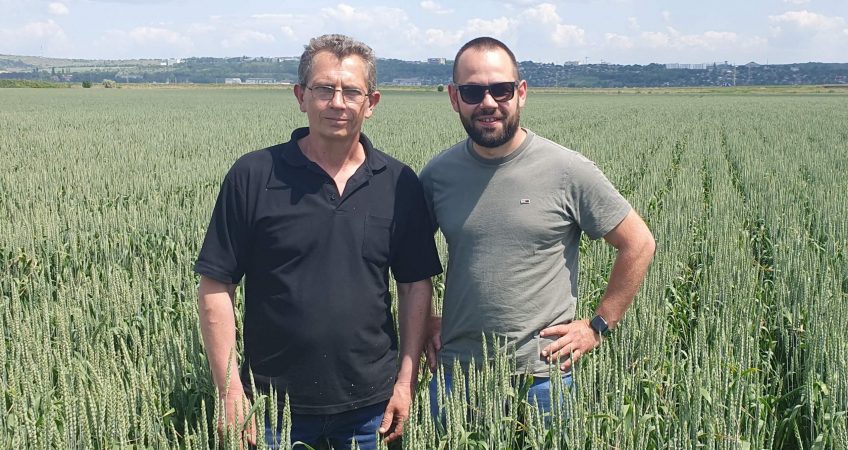
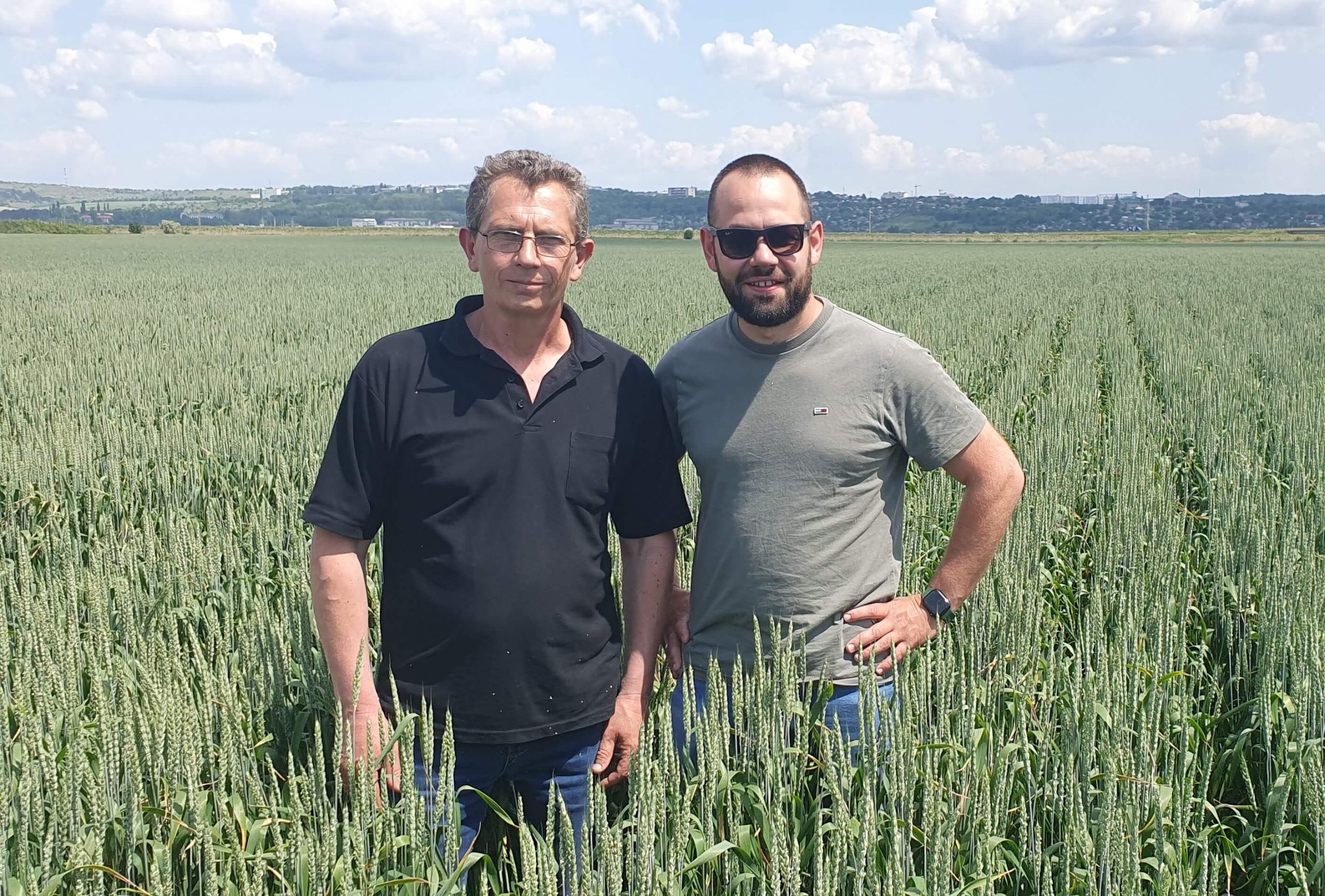
Claydon’s Export Sales Manager Simon Revell reports on his latest visit to Moldova to view the crops on two farms using Claydon Opti-Till®
“Organic Land is the farming division of WeTrade, AgroProfi and Cereale de Aur, all heavily invested in the Moldovan agricultural sector supporting Moldovan farmers with products and services.
Organic Land has two farms: one close to the capital Chisinau and the other in the north close to Balti. The farming business is run by CEO Alexandr Tatarciuc. I spent a day with Alex and Victor Singureanu (Head Agronomist) visiting both farming operations.
AgroProfi is the country’s Case IH importer and is also the Claydon representative in Moldova. As the two Organic Land farms are transitioning to strip drilling using Claydon technology, I wanted to see how the changeover was progressing to support the team, to view the crops and offer advice so the farm can maximise the benefits of Claydon Opti-Till®. This is part of the Claydon ethos to ensure we understand each region’s agriculture, soil type, weather patterns and any specific needs of the farms so we can provide support and advice where required.
A discussion was held with the farm’s management team with questions from both sides about the methodology of Opti-Till® and we conducted a walk-around of the Claydon M6 mounted drill. I wanted to understand what cultivations were being used and also what the local weather conditions are, including average temperatures and annual precipitation. Alex informed me that winters can be very cold but recently seem to be similar to the UK. Summer temperatures can get as high as 40°. Annual rainfall is between 275 and 350mm. Cropping is blocked with wheat, oilseed rape (osr), sunflower, maize, sorghum and winter peas.
We travelled out to the fields to view the osr and wheat crops, which looked very good. The soils in this region are black and the crop maintenance is less intensive as no growth regulators are used on these wheats pictured. What was interesting was how clean the crops were.
The wheat was drilled on 25 September after sunflower. The field was cultivated with disc BP-4.0 and vertical tilled with Zeus 6VT. The seed rate was 4.2 million seeds per hectare, variety Bezosta 100 C1. 80 kg of liquid starter was applied with planting AmeSal NP9.30. 250 kg of UAN -32 + Sulf
We then travelled north to the larger farm where they have almost 800 ha in a block but some of the other fields are dispersed in different areas making the total farmed area 2,600 Ha.
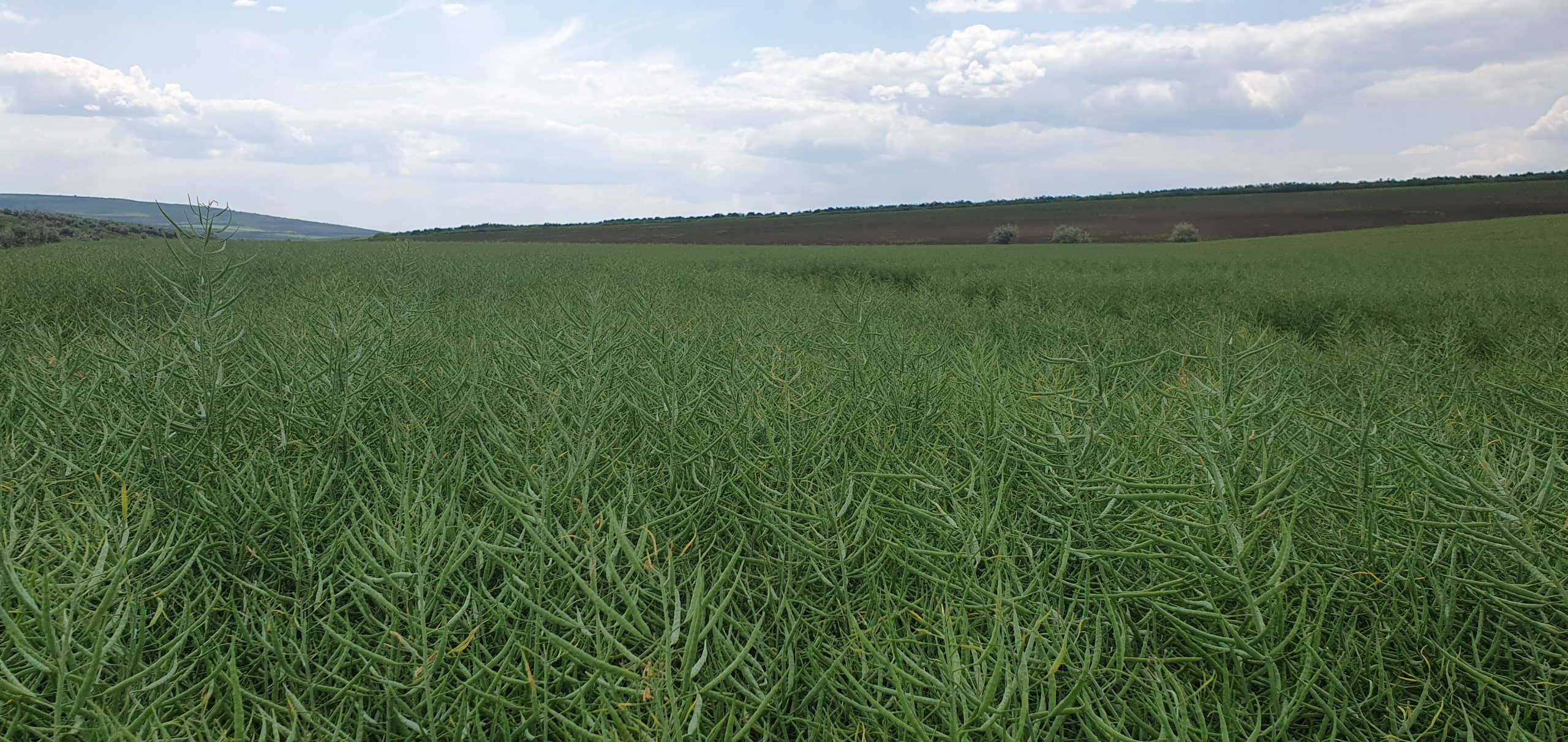
What was noticeable was the rolling landscape, the size of the fields with plenty of trees and coarse hedges. This time of the year it is beautiful and very similar to eastern Romania and northern Bulgaria.
We visited the fields of oilseed rape, wheat and winter peas. The farm is practising vertical tillage with short disc type machines, and they are not frightened to experiment. One field of wheat has had a narrow row conventional drill with every other row blocked off to compare against the Claydon banded row. It will be interesting to see how the yields compare.
In other areas they have trials of different crop applications, trying to improve the crop performance with a major view to improve their soil health. The soils in this region are different as they are less organic but seemed to be in good condition. Generally, the same cultivations were used.
Earlier in the day we discussed the importance of residue management; although average yields in Moldova are lower than we would expect in the north western part of Europe, stubble management is a very important part of the Opti-Till® system.
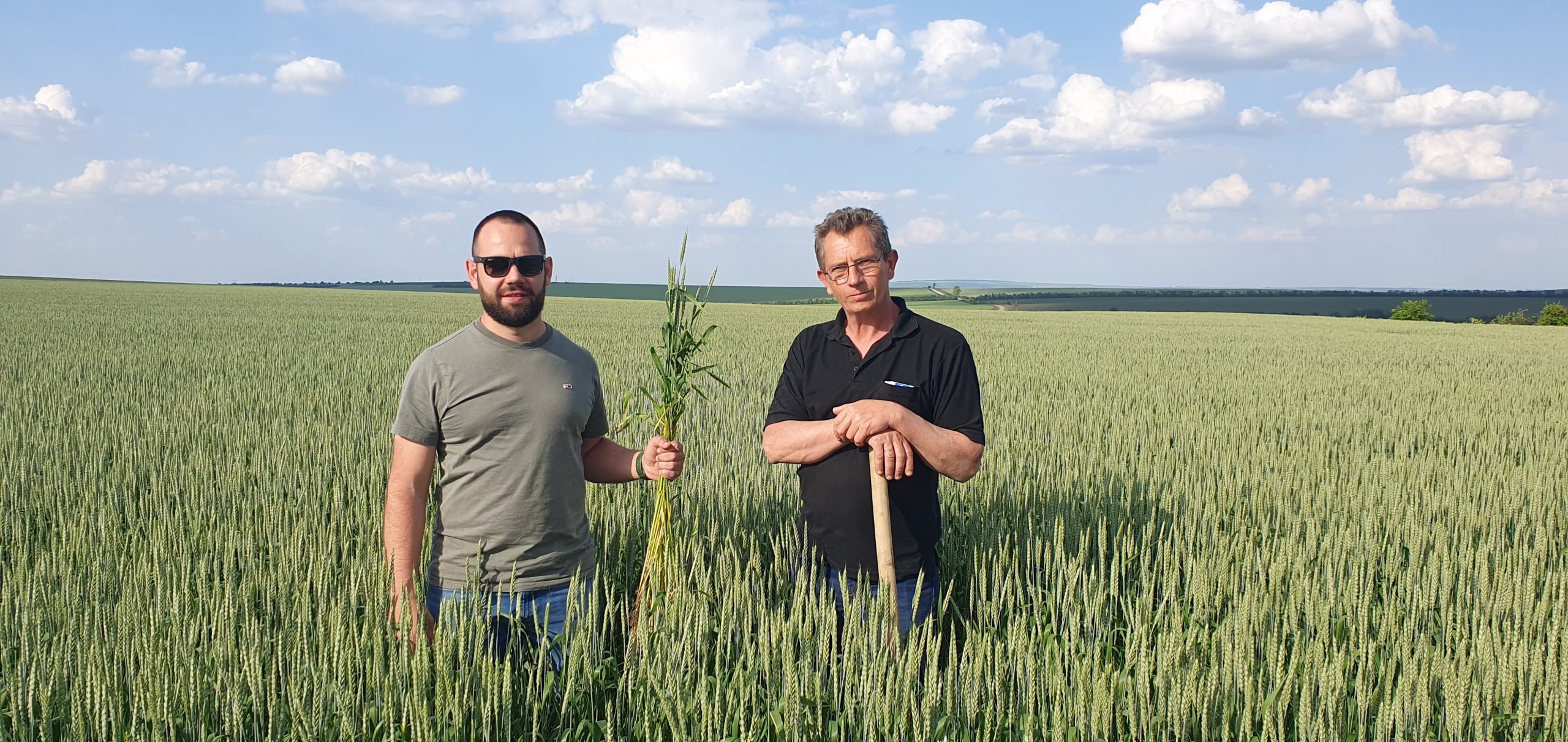
We visited winter peas that were drilled in early October. They are very similar to winter beans so the plant is not too winter proud and as you can see the crop looks very well.

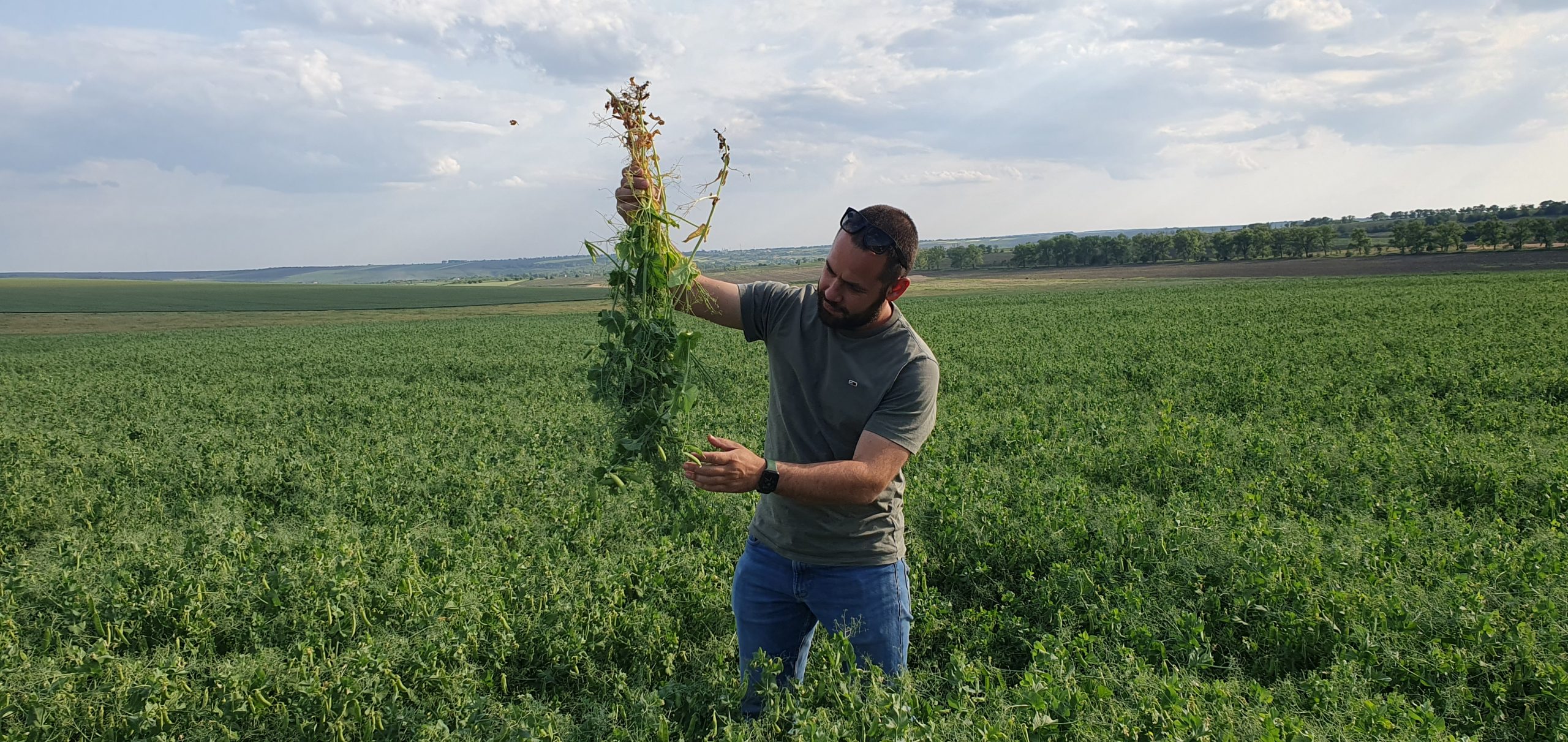
We had a long but very interesting day with temperatures hovering around a very pleasant 25°. There appeared to be enough moisture in the soil with the expected harvest to start in early July.
We discussed the cultivation aspect and I believe they can reduce their cultivation down to residue management with the straw harrow. What is interesting is with the Case 225 hp tractor their average fuel consumption is 10.2 litres/ha with the Claydon leading tine technology, providing a huge saving from the previous cultivation regime.
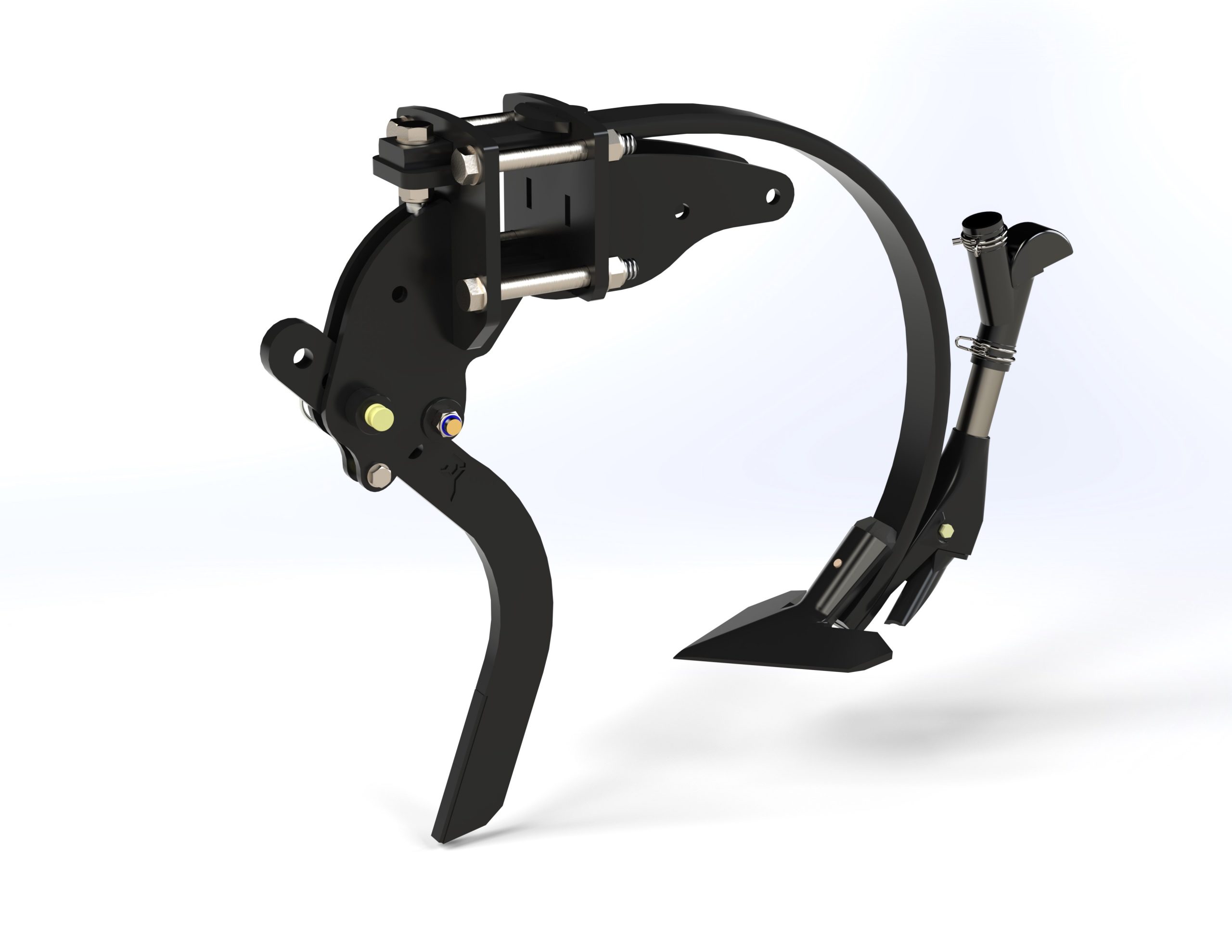
The Claydon leading tine is constructed of 20mm thick hardened steel. Seeding depth can be independently adjusted. It relieves shallow compaction, introduces air into the soil and promotes good rooting and drainage.
The A-share provides a clean environment for the seed, sweeping away crop residue and placing the seed in a band across the width of the A-Share. This provides spatial seed placement giving the plant more space within the row and allowing free air movement and increased sunlight penetration, enhancing photosynthesis.
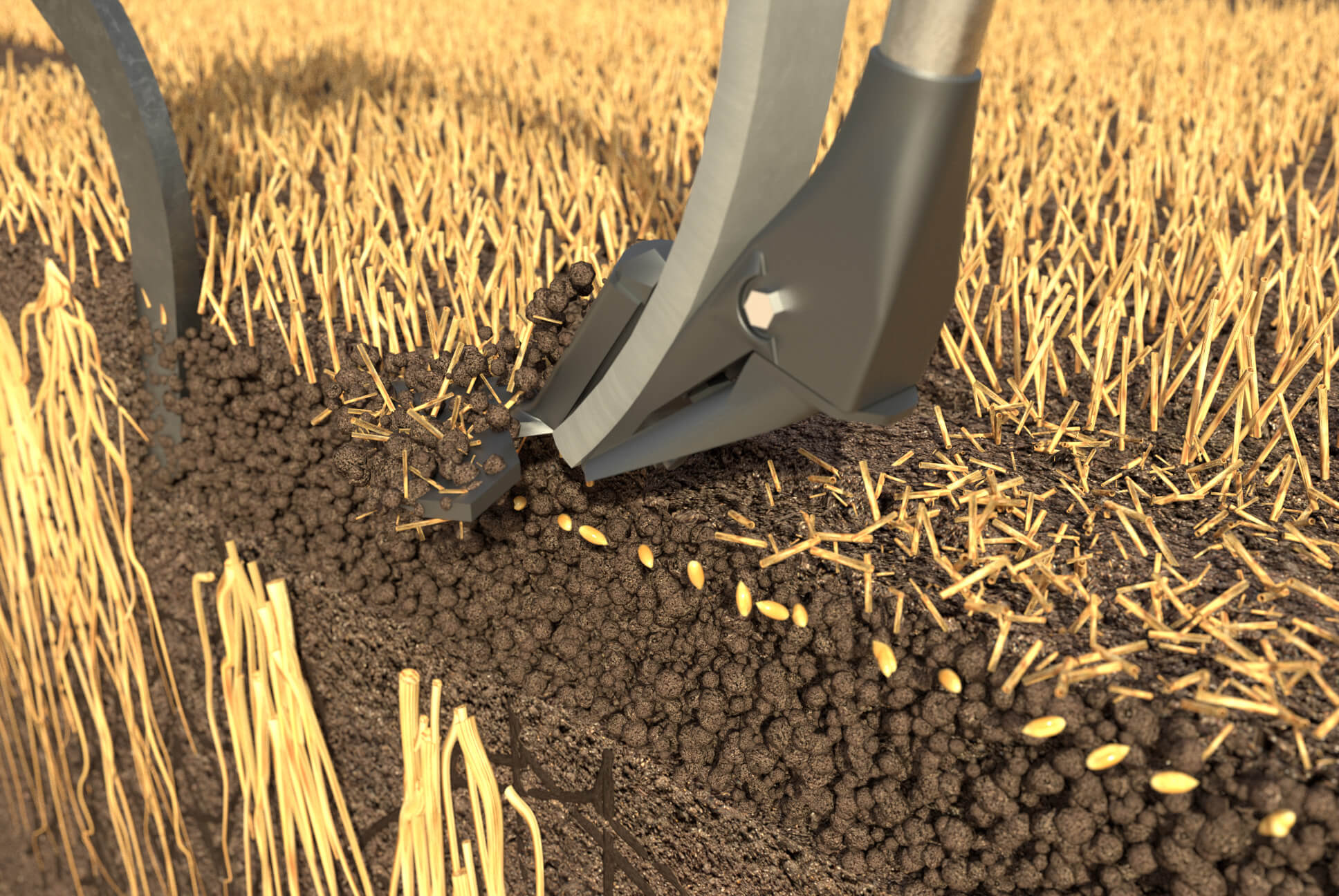
The seed is placed in bands in widths that vary according to width of the A-Share used, approximately 15cm.
The fissuring of the soil (in blue below) creates the ideal conditions for roots to proliferate but leaves the majority of the soil undisturbed so the soil biology is not destroyed and the earthworms can prosper, improving soil health.
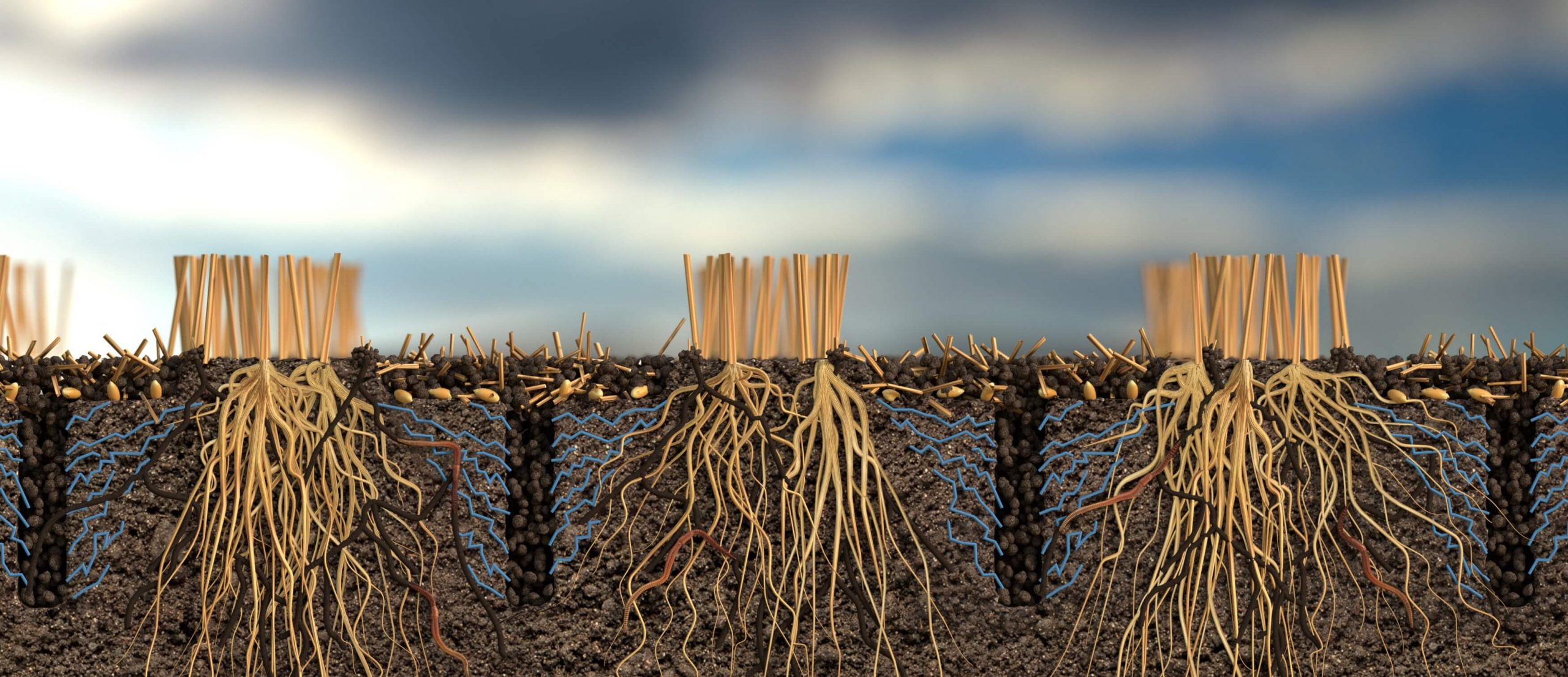
I am looking forward to the harvest results and seeing the benefits in year three of using the Claydon Opti-Till® system. It is then that we should start to see improvements in the soil structure and health which will have an all-round benefit for the farm and the environment.”
Simon Revell
Claydon Export Sales Manager
Initial visit to Organic land by Andrei Botnari 2022


